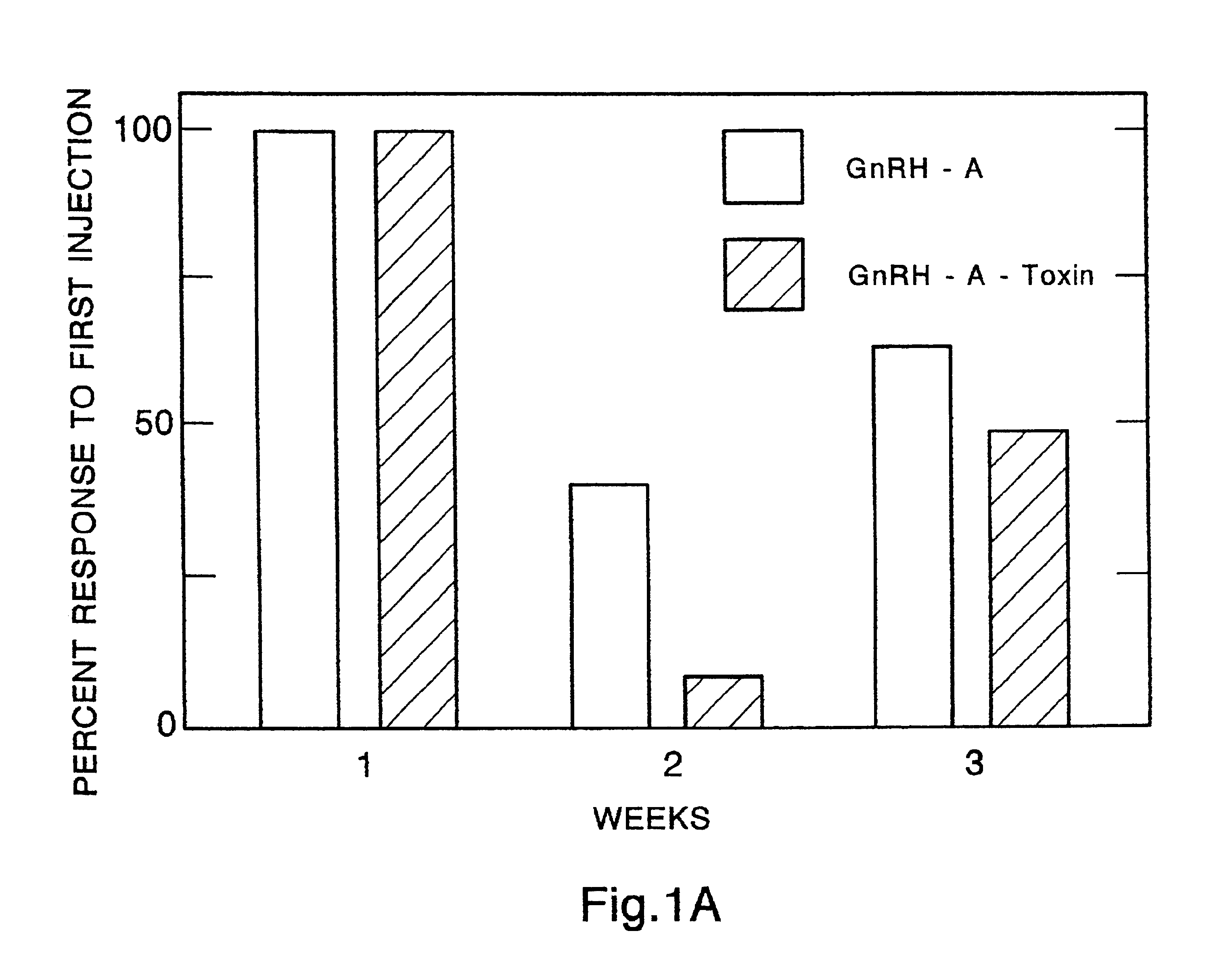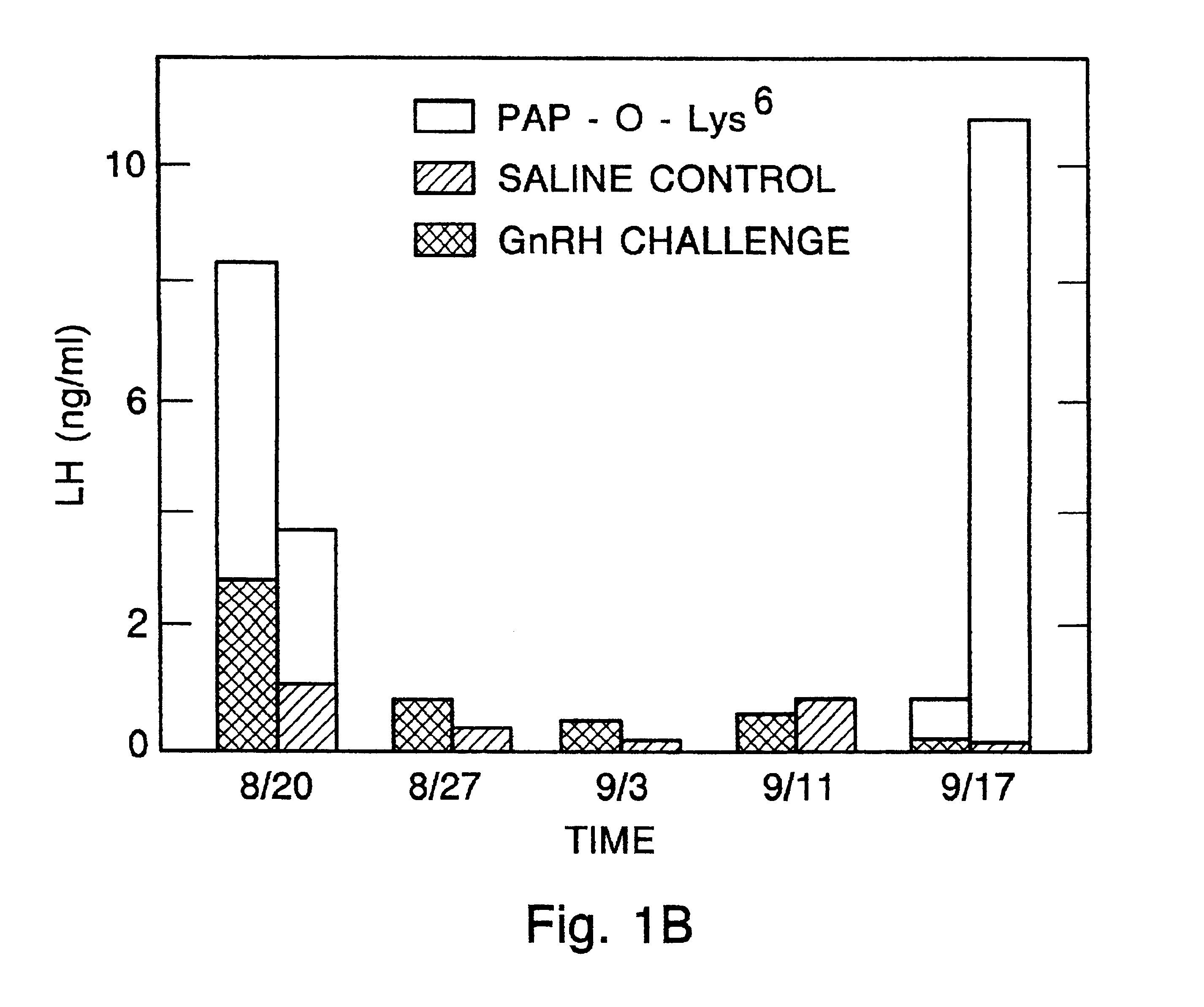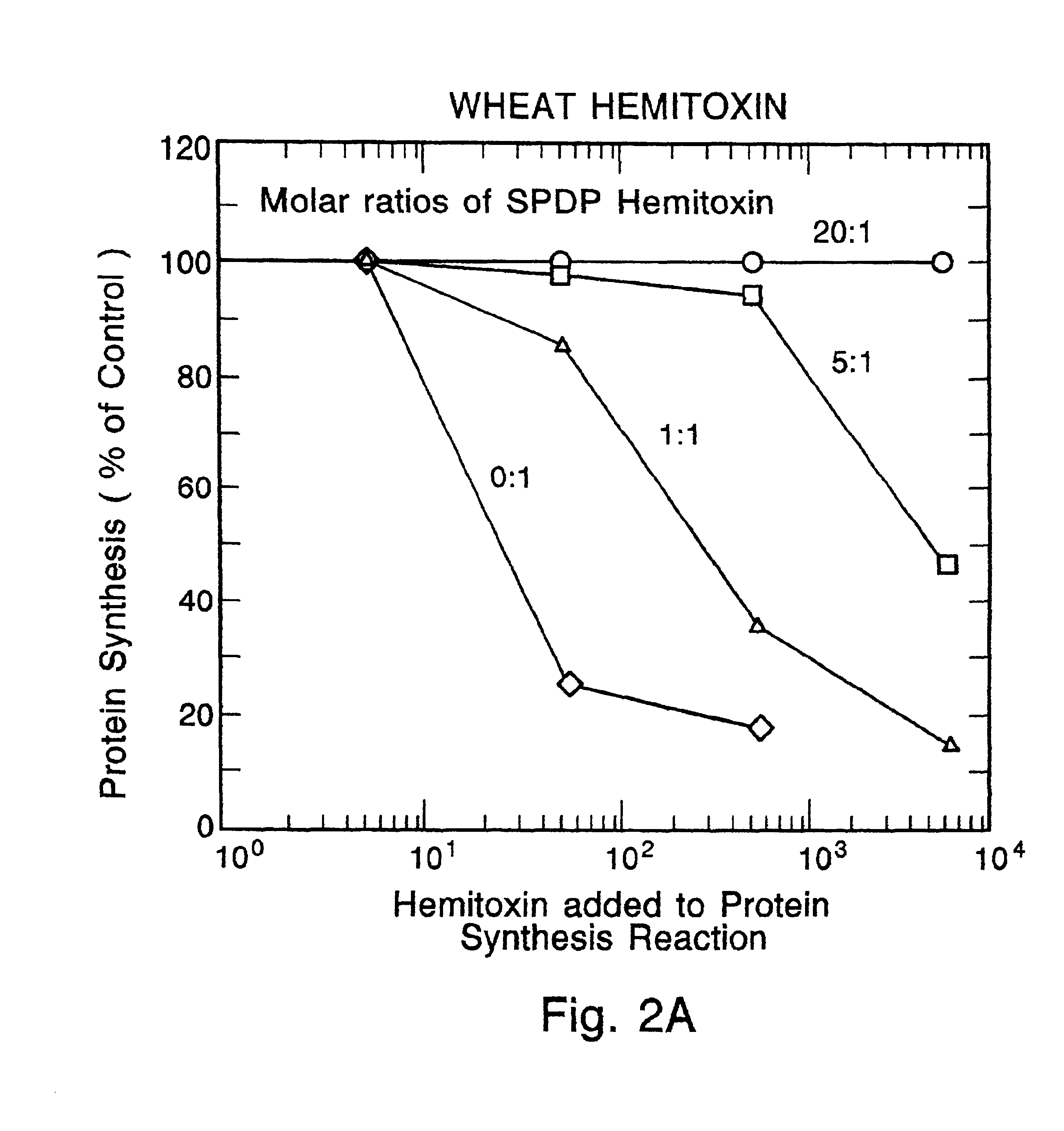Method for inactivating gonadotrophs
a gonadotroph and inactivation technology, applied in the field of sterilization methods, can solve the problems of impairing spermatogenesis in non-castrated adult male animals, generating severe, even fatal side effects, and undesirable “mechanical” castration methods, and achieves permanent and irreversible sterility, enhanced toxicity over a-chain conjugates, and improved trans-membrane transport characteristics
- Summary
- Abstract
- Description
- Claims
- Application Information
AI Technical Summary
Benefits of technology
Problems solved by technology
Method used
Image
Examples
Embodiment Construction
[0060]One of the chief objects of this invention is to provide a class of compounds which will allow safe, inexpensive, chemical castration. As such, applicants' compounds represent an alternative to surgical castration as well as to surgery for treatment of diseases such as breast cancer or certain sex hormone related prostate cancers. In order to better define this class of compounds, Applicants conducted studies on various linking technologies as they apply to numerous toxin candidates. These studies resulted in the herein disclosed group of conjugate compounds. In general these compounds display good gonadotroph membrane binding characteristics along with retention of toxin activity.
[0061]In general, the sterilization activity of the compounds of this patent disclosure was tested in receptor binding assays (to be sure a given conjugate was still capable of interacting with the GnRH receptor cells of the pituitary), in a cell-free translation system (to insure that the toxic prot...
PUM
| Property | Measurement | Unit |
|---|---|---|
| weight | aaaaa | aaaaa |
| molecular weight | aaaaa | aaaaa |
| molecular weight | aaaaa | aaaaa |
Abstract
Description
Claims
Application Information
 Login to View More
Login to View More - R&D
- Intellectual Property
- Life Sciences
- Materials
- Tech Scout
- Unparalleled Data Quality
- Higher Quality Content
- 60% Fewer Hallucinations
Browse by: Latest US Patents, China's latest patents, Technical Efficacy Thesaurus, Application Domain, Technology Topic, Popular Technical Reports.
© 2025 PatSnap. All rights reserved.Legal|Privacy policy|Modern Slavery Act Transparency Statement|Sitemap|About US| Contact US: help@patsnap.com



